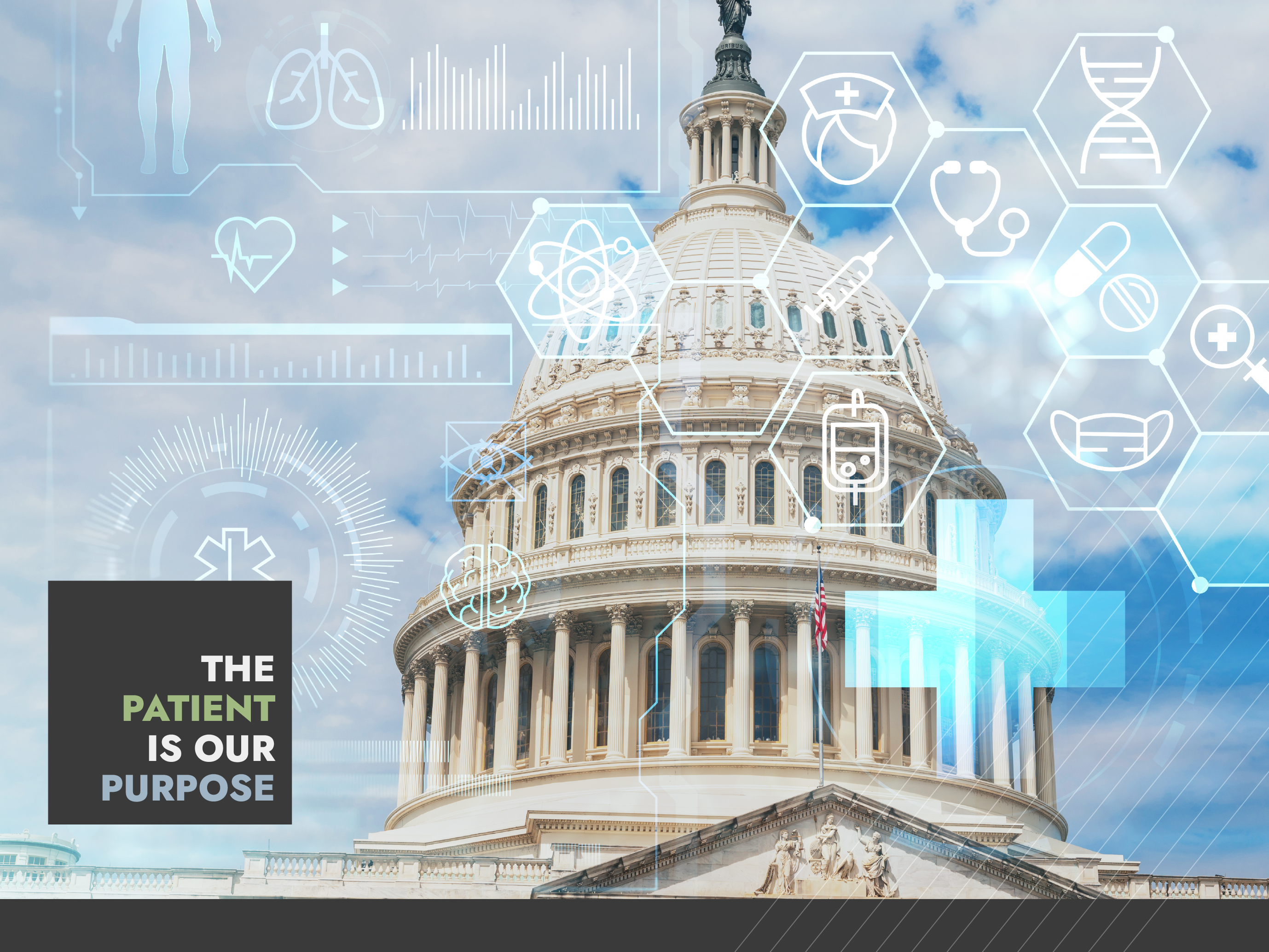The Medicaid Balancing Act
By Greg Chesmore, CEO Gridiron Public Affairs
The public policy world, especially that slice centered in Washington, D.C., is often chaotic. As someone who has spent most of his career polishing my crystal ball to determine the future of health care policy in the U.S., I have to admit that my crystal ball has never been foggier.
With the second Trump Administration upon us, and Republicans (the vast majority of which are closely aligned to President Trump) controlling the House and Senate, one thing is clear: health care stakeholders need to be on their toes, ready to strategically engage with policymakers in the most effective manner possible.
In today’s polarized environment, it’s hard to decipher fact from fiction. All it takes is one bombastic social media post or a headline that doesn’t contain adequate context to trigger the masses. While large-scale grassroots campaigns, filling legislators’ e-mail inboxes and phone lines, certainly have their place, it’s important for health care professionals to take time to fully understand the issues and political dynamics before active engagement.
Right now, Congress is the process of figuring out how to pass a handful of President Trump’s major policy objectives, namely, extension of the 2017 tax cuts and various policies surrounding immigration and border security. It’s not uncommon for presidents to try to sprint out of the gates and achieve major legislative accomplishments in the first year. President Biden’s Inflation Reduction Act (IRA) in 2021 followed a similar course. How the government pays for President Trump’s priorities falls on Congress, and finding a legislative path forward is messy work.
Much of the savings needed to pay for President’s policy priorities will need to come from government-funded health care programs, namely Medicaid. Whether you choose to frame the issue as “massive cuts” or “eliminating fraud and abuse”, it’s clear that there will need to be some sort of changes to Medicaid in order to achieve budget savings. The voice of health care professionals is critical, but the voice needs to be clear, yet rational…well-informed, yet passionate. Finding the right balance is key. To assist in that effort, here are six quick tips for engagement:
- Take a breath…and verify. The old adage, “Trust, but verify”, holds true in policy engagement, just as it does in many other areas of life. We’re often bombarded with strident messaging (“They’re going to close nursing homes!” to “This is one stop closer to socialized medicine!”), but reality is often found far from the extremes. Take time to examine the issue, read the bill, ask questions and talk to the appropriate sources before engaging. Thankfully, things rarely move at warp speed in Washington, D.C., so major policy decisions often take time to move through the process.
- Put your personal politics aside. I know this is difficult, especially in today’s environment, but it’s crucial if you want to be effective. If you feel so passionate about politics that you can’t keep your personal politics off social media or you can’t stomach sitting down and having a discussion with those on the other side of the political spectrum, you may want to consider identifying another individual to speak on behalf of the association.
- Connect the issue to local services and constituents. While there certainly are some inaccurate stereotypes about Medicaid and people who rely on Medicaid for health care services, you won’t find any legislators who want to completely gut the program and end health care for vulnerable populations. It’s always effective to localize any issue. The Kaiser Family Foundation recently released a helpful map that details the number of Medicaid enrollees in each congressional district. https://www.kff.org/medicaid/issue-brief/congressional-district-interactive-map-medicaid-enrollment-by-eligibility-group/. Reminding legislators and their staff about how proposals will impact real people in their hometown always has an impact.
- Be careful with any public posting on websites or social media. We live in an age where people want to put organizations on one side of an issue or the other. It’s important to be sensitive in crafting and posting any language that is shared publicly. Focus on the facts, contain emotion and refrain from anything that could be construed as a personal attack on the policymaker.
- Choose your allies wisely…and cautiously. Coalitions can be enormously helpful in moving legislative initiatives, but managing coalitions and their messaging can be challenging. A coalition’s strategy and actions can negatively impact your organization’s ability to establish relationships and positively impact policy.
- Consider the long-game and invest in relationships. When legislators and their key staff members know you and the work you do, you’re likely to receive a positive audience, regardless of the issue. It’s best to build relationships in less hectic times. Invite the legislator for a tour or a visit with your leadership team when there isn’t a specific ask on a hot button issue. Build bridges, don’t burn them—even when the issue is of critical importance.
Navigating the public policy environment has never been more challenging…or more important. It’s a volatile time for health care policy and the consequences of decisions that are being made at the federal and state levels are real. The voice of health care professionals is pivotal in crafting solutions that balance the needs of patients and health care providers with the need to identify and address inefficiencies in the system.
Greg Chesmore is the Chief Executive Officer at Gridiron Public Affairs. His 30-year career in government affairs includes leadership positions in the non-profit, public and private sectors.






